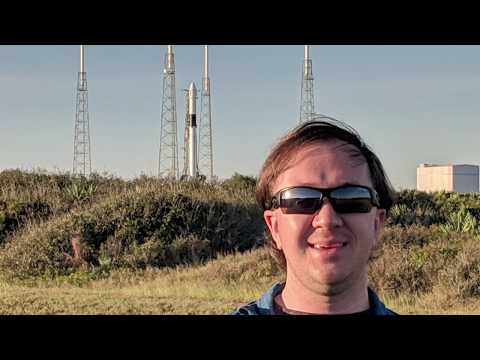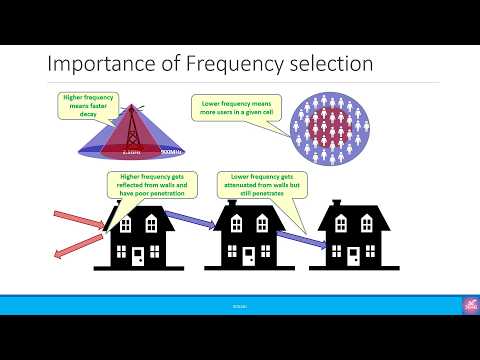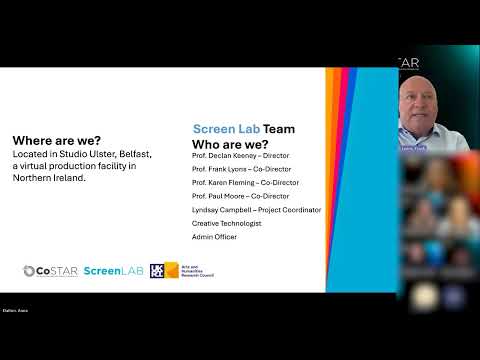Episode 5: Billy Gallagher

Hello. And welcome to past the torque I'm your host Katie cadre you. Asked some really great questions this week and we have Billy Gallagher, here to give you some answers don't. Forget we do have bubbles pop up to give you more information without. Further ado I'll pass it on over to Billy, hi. Katie thanks for having me on today. Please. Explain, what you do I. Am. A roboticist, and robotic systems engineer at NASA Goddard's, exploration, and in space Services Projects Division I work, on developing, the technology, needed in order to send robotic, vehicles into space to repair, and refuel spacecraft, as well, as, manufacture. And assemble new spacecraft in, space in. Addition we look at ways that we can use that technology to explore beyond Earth's, orbit and look at the, moon asteroids. Comets. Mars. And beyond and I. Also look at using, augmented, and, virtual reality. Technology, in, an engineering and science setting and how we can use those kinds, of new technologies, to, further. Develop, NASA's, capabilities. What. Does human robot, cooperation. And - one. Of the difficult, things about robotics, is making sure that robotics, and people work together and robotics. And people work very differently people are very good at picking up an object understanding. What it is in feeling, its shape and size and, being, able to understand, how hard they're pushing on it but if you told a person that you have to place this object exactly, here, every, single time it's, actually going to be a little bit difficult because people aren't that precise, robots. On the other hand are super precise you can tell the robot push. Here over and over again and it will do it no, matter what but. Robots don't necessarily. Have the same intuition. And feel for things that people do so, in putting together kinds, of tasks that you're going to have people and robots working together and this, is especially true as we start to explore. Further. Out into space and we start to return to the moon, and potentially, send people beyond the moon then. You're going to need robotic companions, for these astronauts that are going to go out there and in, order to make sure that the robots, are safe around the people and the people are safe around the robots we, need to understand how those interact, in order to do that we look at how, people respond, to what robots do we, look at how we, can make it easier for people to control the robots and we also look at what kinds, of tasks, are best done by a robot, versus best done by a person. What's. The goal utilizing. Robotic, technology, in outer space. The. Biggest challenges of working in space is the fact that it is space it is cold there is no air it is expensive, to get to it's difficult to get people there in order, to send people there you have to send a lot of things with people they need food air water, and space. To live one. Of the advantages, is that robots don't really need most of these things and so. In the places that it's very difficult to get people to we. Can send robots there, to do the tasks that might otherwise not, get done one, of those examples is refueling satellites, in orbit on the ground, you can just pull your car up into a gas station and, put a gas pump in and refill it in space there aren't any gas stations, the there. Is no tanker truck that's going to be able to come to you and getting, a person out to a scientific. Satellite, in an orbit that is completely, different than where we've ever sent people is actually, very difficult to do so that's a good example of where we can send a robot, to, be able to go and do those kinds of tasks, either autonomously. Or under, the control of people, here on the ground so that we still have people involved, in the decision-making in, accomplishing. That task we, have the, technology, that we need now to be able to make. A rover that can drive on the surface of a foreign planet and, the. Addition. Of the technology, that we need to send people there is. Actually. More a matter of time, and cost. As opposed to technological. Know-how. We. Know the, systems that we need to build we know how we. Can build those systems it's.
Just Very difficult to get them there right now so. I actually think that we're probably fairly, close to being able to build something that can get people to the. Surface of the Moon the surface of Mars and have them actually establish, a presence there and have, a whole bunch of robotic, companions, that can run around and support, those tasks. What. Are some future goals of robotics in space compared, to current robotics. So. The current robotic systems that we use in space have a very limited and defined role there's, the Space, Shuttle robotic. Arm and the ISS, robotic arm that are used primarily to, aid in astronauts. Doing evie, a type tasks, so, the Space Shuttle robotic, arm was instrumental in, things like servicing, the Hubble Space Telescope the. ISS robotic arm is very, helpful in helping astronauts. Get, around, the. Outside of the space station as, well as being. Able to reach parts of the space station that astronauts, have a more difficult time getting to on the EVs, it's. Actually, very. It's. Very difficult, to get those robotic arms to other locations, because they rely on the. Infrastructure, that exists at the International Space Station so one, of the things that we're working on trying to do is be able to build robotic platforms, that can go farther away from a human presence they. Can go to places, like polar, orbits, they can go to places like. Lagrangian. The moon orbits. That we have never been able to get people to in orbits, that we. Might. Need the capability to do things but. We don't necessarily have a reason, to send people there on a, regular, basis, beyond. That then we want to be able to get to robots, that can help explore the solar system we want robots, on the moon that are going to help establish a colony we want robots on the surface. Of Mars that are going to help explore, the geology, and the, history, of that planet, we want robots that are going to be able to go and explore the compositions, of asteroids, and comets and, understand.
What They're made of where they came from and how we can protect Earth from the. Space. Shuttle robotic, arm also. Affectionately. Known as the Canada arm was one. Of the first real, robotic, arms that we put into space and it. Had. A lot of new. Technologies. For the time and, over. The years robotic, technology, is advanced, so the ISS robotic arm actually has newer, components. It has a longer, arm. And the ISS robotic arm has the ability that it can actually what they call walk-off where the robotic arm grabs here and then it goes and grabs another spot with its other end and lets go with its base and it can kind of inch its way along. The, ISS. So they can reach more places. The. Difference. Between those two arms, and the, OSM, servicing, arm is actually. Its capability, in its purpose those. Two arms were designed, to be nice and long and be able to reach out and grab things in space and pull, them in and be able to move stuff back and forth along the ISS, but. They, don't actually have, a, very, precise, movement, and they're actually not particularly, strong, arms. So. For servicing, purposes, like the Oh same arm where we want something on a much smaller scale we. Can build an arm that's a lot more precise and it gets us the, ability to very carefully. Insert. New components, into satellites, and very carefully, thread on to fuel valves on satellites, and, be. A lot more accurate, than. We can with big long spindly arms. Could. Robots take over the exterior, tasks. On the ISS, and how difficult would it be to program, them for such a task. So. Robots already do a lot of the exterior tasks on the ISS, if, it's something that needs fine motor skills then the person is going to go out on a knee VA and take. Out their tools and adjust, the. Torque. Of fasteners, and things like that but, if it's something that doesn't, need that level of precision the ISS, robot actually does a lot of that already now, one of those examples is, searching. For potential leaks on the outside of the ISS, we. Have a tool that is a leak locator tool that is on the ISS right now that, they can put on the end of the robot arm and the robot arm can go back and forth and sweep across the exterior, of the. ISS, looking. For any potential leaks and this. Is a much more efficient and much easier way to find these things than having a person, have to go out on a VA and. Cover every inch of the exterior of the station so. That is actually one. Of the ways that we're already trying to use robotic, arms to, reduce. The amount of manual. It needs to be done by an astronaut on the exterior of the spacecraft. As.
To. How hard it is to program it, depends. Highly on the task something like a leak, locator tool is actually, fairly straightforward because. All you're doing is giving it a bunch of back and forth motions, and the, robot will eventually be able to cover the entire surface. Of the ISS and an, operator on the ground can sit there and monitor it while it does that as. You, start to get into some of the more complicated tasks, like reaching. Out and grabbing a visiting vehicle that's bringing supplies to the ISS, those. Tasks, require, a little bit more monitoring. From the operators, on the ground and a little bit more, careful. Planning so that we can make sure that we don't damage any vehicles. When they arrive. What. Has been your most proud, moment, in your career at NASA and why. So. I will admit this is a difficult, question the. Mission. That I'm working on right now is in the middle of. Working. On all, of our approvals, to get our flight Hardware I can. Tell you that when that mission launches, that will be the easiest answer to this question but. Up until this point I think I can come up with a couple possible, options, I have, to say that when I first started at Goddard I worked. Many. Years to, be able to get a job at NASA and I knew that I wanted to work on spacecraft because I find the. Concept of space travel fascinating, and the concept of exploring, further, out into, our solar system into the unknown a. Fascinating. Way. To understand. Who we are and where we came from as people. And. So, when I first, started at, Goddard I had the opportunity to work on a, project that, sent me down to Kennedy, Space Center and we, were building a, robotic. System that could can be controlled remotely to, test out some of the ways that we would refuel spacecraft, and while. I was at Kennedy, Space Center I had worked for NASA for all of three months at the time I, took. The opportunity to explore and go see the, old Apollo, one launch, pads the old. Saturn. V launch pad, that, is now the space shuttle launch pad that is now the, SpaceX. Falcon launch, pad or be the SLS launch pad and. Really. Took, enough took, the opportunity of kind of taking. The the sights and the scenery around me and. That was definitely a. Amazing. Experience, to realize that I put in many years of work through college through grad school and all of that and. It, all had actually paid off to get me here I would. Have to say that the the other. Proud. Moment, it, was actually. Just a year and a half ago I, worked, on a, mission, called robotic refueling mission, and that. Is an experimental platform that we send to the ISS to then use the ISS robot, to test out a bunch of the technologies, that were building for doing satellite servicing, and repair so, I got to go down for the launch of that and that. Was the first time that I had ever watched a rocket launch in which I actually knew, the hardware, that was on that rocket and I had built something it, was on that rocket and that was a very, exciting, opportunity. How. Much fun are you having looks. Like a great job. There. Is a certain, excitement, that, involves, walking into. The. Integration. And the testing buildings at any. NASA. Facility, and the, fact that I get to walk into those every day to do my job is, just. Something. That I try to never forget I try never to forget the fact that I work in a place that. Builds. Once-in-a-lifetime. Hardware, and unique, things that, will go into space and potentially, travel millions. And millions of miles from, Earth and discover things that nobody has ever discovered, before and that's, just exciting, that, makes me enjoy my job and makes me look, forward to being able to contribute. To that kind, of, discovery. How. Special are space actuators. One. Of the things that, makes. Building, robotics, for space very difficult, is that the environment, that these robots are going to work in is very different than the environment, that robots are going to work in on the ground if, you were to go to a.
Factory, That's, building cars for instance, they're going to have all kinds of robotic arms and they're going to be picking up pieces and moving and, putting them on cars and everything and. Those. Robots, have. Motors. That were built to be used on earth those. Motors, might, use gears, and lubricants. To make things work better they might use different. Kinds. Of sensors so that they can track where the motor is going and be very precise, a lot. Of those things actually don't work in space the way they work on the ground so, for instance those lubricants, that go, into motors, are very often made with liquids, and greases that. When you put it in space will either freeze, and solidify, or will, what we call outguess it'll basically boil, away into space and you'll. Have none of it left so. In order to build an actuator for space which. Comprises. Of a motor and a gearbox and all the things that are needed to drive the robot you. Need to come up with different kinds of lubricants, we. Need to come up with different materials, to make the gears out of so, that the hot and cold of, space doesn't, work them and that's, another thing that isn't. Necessarily, obvious about, space most. People think of space as cold and desolate and there's nothing there there's no warmth there's no light, there's nothing, but. Really and truly there's actually a lot, of light because, there's nothing to block the light so the sun shining, directly on, something. In space will make it very hot even, though there's. Nothing, around. To, hold, that heat, but. Gears don't, like getting, hot and cold hot cold hot and cold they crack and they'll change shape so you have to make years out of very sturdy materials, also. Some of the sensors that we use on the ground don't necessarily, work in space, like. I said the Sun is actually very bright a lot of the sensors that we use on the ground require. Being in dark places and they go in little cases and attach it to the motor and then they use lights inside those little cases to figure out where the robot motor is going in. Space. Because. The Sun is so bright those, cases can't necessarily always block out the light and so sometimes the sensors don't work the same way and so we need to use different kinds of sensors in order to be able to follow the motor and understand, exactly, where, it's going so. All of those things combine. To need to build, different, types of actuators in, order to drive robots in space. What. Are the popular robot, programming, languages. So. A programming, language is, a, way that, you talk to a computer system, and so you can think of a programming language just, like you think of a, spoken, language that, people speak, in different countries if you, go to France you're not necessarily going to be able to communicate with, somebody who does not speak English but, if you learn to speak French, then you can communicate, with them and computers. Work very much the same way every, computer system has its own way of operating, its own way of thinking as, you could call it and each. Of those different systems, work. Slightly differently. Programming. Languages, are the. Way that people have come up with to. Make sure that people can tell those systems what to do, so. We use a, large. Variety of different programming languages, for, the, different tasks and the reason for that is each language has its own use, case and its own purpose, we. Do a lot of writing. In C and C++ those. Are very common languages, that are used all over the world for all kinds, of things and, they're. Very well supported we, know very, much how they're going to work and so they're very reliable languages. So. A lot of the control, methods for the robot arms themselves are written, in those languages, we. Also use, a whole, bunch of lab equipment that, is for. Testing and is for supporting, the development of these robots and those run languages, like Python those run languages, like Java and. It. Really depends on the hardware and what the hardware supports, which one of those languages you're using there and then, we have a lot of tools that we use for analyzing, the. System for making sure that the, robot is going to be strong enough to do the tasks that it needs to do that the robot is going to be, ok in the hot and the cold environments. As you orbit the Earth those. Systems, tend to run things like MATLAB, or run, in, finite, element analysis, languages, that. Are used for, understanding. The details. All, the particulars. Do. You recommend any NASA programs, for high school students interested, in robotics.
Many. NASA centers, do internships, with high school students and we routinely have, high school students from the area come, in and do internships, through the school year with us and it. Gives them an opportunity to, work, on more advanced, hardware than they might be able to get in the lab at their high school it, gives them an opportunity to see the spaceflight, hardware up front and to learn what kinds, of things, that. It really takes to build a spacecraft and so, if you're interested in doing, internships. Like that you should go, to NASA's, website and go to the internship, section and there's going to be information, on how you can apply. To be a high school intern at your local NASA center and then. One of the things once you get into college NASA. Takes a lot of college interns NASA also does co-op stints, which is basically a longer, version of an internship where. You spend an entire semester working. With a team at, NASA I, actually, did that that's how I started, as at. NASA I did an internship, several. Summers at NASA, Goddard where I work now and then I also did a co-op period, at JPL. Where, the Mars rovers, out in California, are built and. So that's another excellent way to really get. Involved and learn what. Goes on at NASA and get, some great, hands-on experience. Please. Tell us about your hobbies outside of work, so. Yes my life is not all about building robots that are going to go into space I also, have things that I do for fun too, and, one. Of my favorite, hobbies is actually, flying I have a private pilot's license and I'm, a member of a flying club here, in the. DC area and we, own our own plane so, it's a small four seater plane not. You, know not the size you're gonna see in an airport but basically about. The size of your, family sedan but with wings and, I. Enjoy. Taking, it out on trips on the weekend you know maybe fly out to the, Eastern Shore of Maryland flying. Over the Chesapeake is always, very spectacular. Makes. It easy to get out into, Western. Maryland down to Shenandoah Virginia. Go hiking there's. Lots of good places out there for, camping, and sightseeing yeah and. So that's one of my favorite things to do I'm, also into photography I have a DSLR. Which is a digital camera, with interchangeable lenses, the kind of big camera that you'll see, photography.
Using On the sides of sports games and things like that and. I love, to take that camera with me whenever I go places and capture the. Beauty, of nature and, say landscape, photography, Astro photography starts, sunrises, sunsets. Waterfalls. Those are my favorite things take pictures up and. The. Two of those together naturally, mean, I like to travel a lot, I like to see the world I like to get out and go places and, learn. About, how. Other, parts of the, country how other parts of the world live. And, see. Fascinating. Sights that you. You're not gonna necessarily see, in your backyard. Thanks. So much Billy and, thank you for another round of great questions don't. Forget to check back here next week to meet another one of our NASA engineers, we'll, see you that. I've. Got some fun stuff to share here too I didn't. Mention this earlier but I also love Legos and so I've got a few exciting. Space Lego models to show. So. We've got a lunar, lander here complete, with you, can see inside, the lunar lander the astronauts must be out on a excursion. Right now because it's empty there's. Also the Space Shuttle all. Set, and ready for takeoff, we've. Got. Mars. Rover, over, here this is Spirit, and Opportunity. And. Then. We've got a Saturn, 5 rocket mmm. Bit taller than all the other things and then we've got some fun little things down here we've got an astronaut on his way to the launch pad. We've. Got, a little, diagram of Margaret, Hamilton figuring. Out how to classify all the stars and then over here we have Nancy Grace Roman otherwise known as mother Hubble NASA actually just renamed a new Space Telescope after her. You.
2020-05-31 03:19


